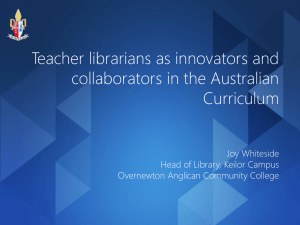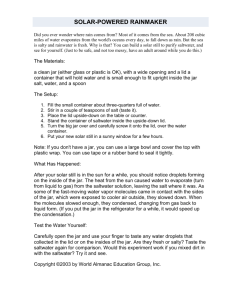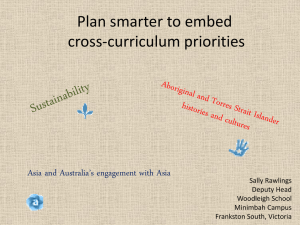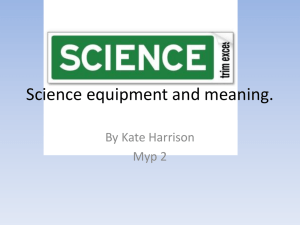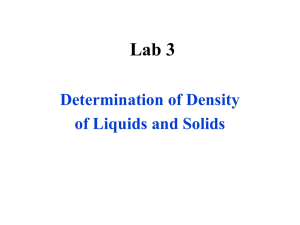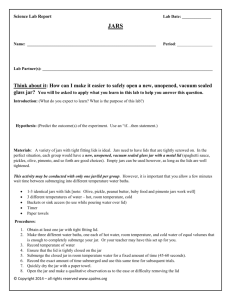Fluid density
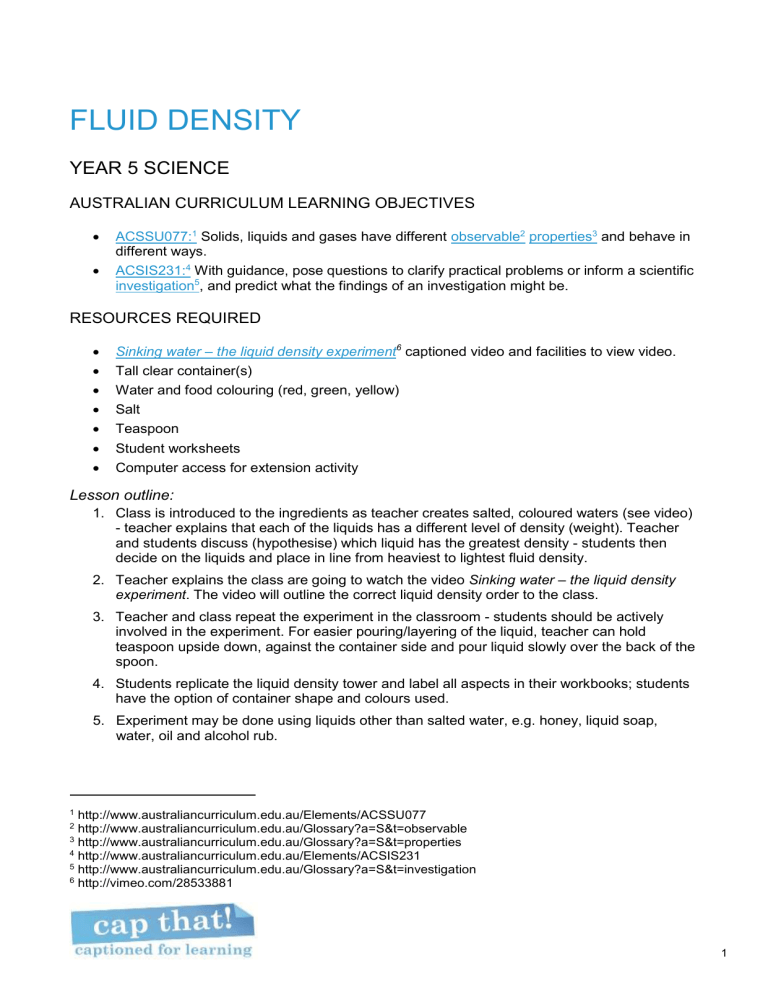
FLUID DENSITY
YEAR 5 SCIENCE
AUSTRALIAN CURRICULUM LEARNING OBJECTIVES
ACSSU077: 1 Solids, liquids and gases have different observable 2 properties 3 and behave in different ways.
ACSIS231: 4 With guidance, pose questions to clarify practical problems or inform a scientific investigation 5 , and predict what the findings of an investigation might be.
RESOURCES REQUIRED
Sinking water
– the liquid density experiment 6 captioned video and facilities to view video.
Tall clear container(s)
Water and food colouring (red, green, yellow)
Salt
Teaspoon
Student worksheets
Computer access for extension activity
Lesson outline:
1. Class is introduced to the ingredients as teacher creates salted, coloured waters (see video)
- teacher explains that each of the liquids has a different level of density (weight). Teacher and students discuss (hypothesise) which liquid has the greatest density - students then decide on the liquids and place in line from heaviest to lightest fluid density.
2. Teacher explains the class are going to watch the video Sinking water – the liquid density experiment . The video will outline the correct liquid density order to the class.
3. Teacher and class repeat the experiment in the classroom - students should be actively involved in the experiment. For easier pouring/layering of the liquid, teacher can hold teaspoon upside down, against the container side and pour liquid slowly over the back of the spoon.
4. Students replicate the liquid density tower and label all aspects in their workbooks; students have the option of container shape and colours used.
5. Experiment may be done using liquids other than salted water, e.g. honey, liquid soap, water, oil and alcohol rub.
1 http://www.australiancurriculum.edu.au/Elements/ACSSU077
2 http://www.australiancurriculum.edu.au/Glossary?a=S&t=observable
3 http://www.australiancurriculum.edu.au/Glossary?a=S&t=properties
4 http://www.australiancurriculum.edu.au/Elements/ACSIS231
5 http://www.australiancurriculum.edu.au/Glossary?a=S&t=investigation
6 http://vimeo.com/28533881
1
HOMEWORK/EXTENSION
Students can make a ‘lava lamp’ at home using a clean and empty clear jar (with lid) and filling the jar three quarters full with water, in a separate container mix food colouring and oil; then add this mixture to the jar of water and seal the lid. Shake, mix and stir the jar and watch the oil move through the water and return to the surface.
OPPORTUNITY FOR FURTHER ACTIVITY
•
•
Students can research the reasons why one fluid has a higher/lower density than others.
Students write, draft and publish a procedural text for testing the density of fluids - including a diagram of the layers built.
2


